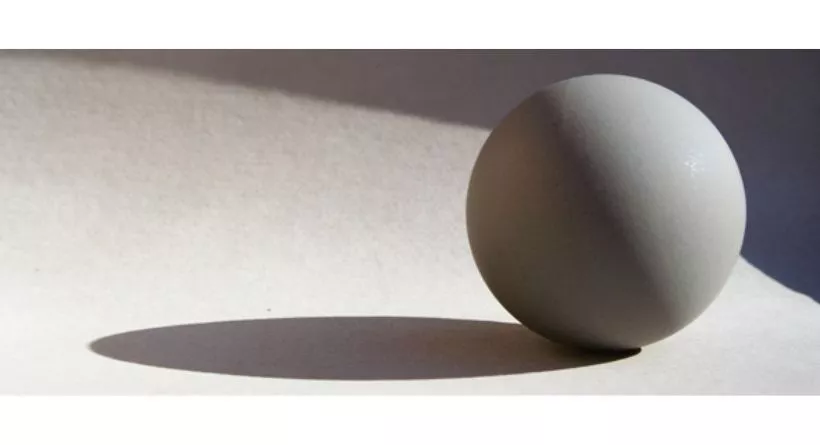Are you an aspiring artist or an art enthusiast struggling to understand the various categories of form in art? You’re not alone. Grasping the different categories and their distinctions can be a daunting task. However, worry not, as this blog post aims to resolve the confusion surrounding form in art and its various categories. We acknowledge the challenge and promise to provide a clear and concise solution to help you gain a better understanding of this vital artistic concept.
Throughout this article, we’ll provide an overview of the main categories of form in art, debunking any misconceptions and clarifying which category doesn’t belong in the list. By addressing this pain point, we aspire to boost your confidence in discussing and analyzing art forms effectively. With our focus keyword, “form in art,” we’ll ensure that you have a thorough comprehension of the topic by the end of this post.
Understanding Form in Art

Definition and Importance
Form in art refers to the three-dimensional aspect of an artwork, encompassing its shape, size, and structure. It plays a critical role in determining the overall composition and visual appeal of a piece. By grasping the concept of form in art, you can better appreciate the creative process behind various artworks and develop a deeper understanding of artistic styles and techniques.
Differentiating Form from Other Art Elements
Form is often confused with other elements of art, such as shape, color, and texture. While these elements are interconnected, it’s essential to recognize that form is specifically concerned with an object’s three-dimensional properties. Shape, on the other hand, is a two-dimensional concept, whereas color and texture add visual interest to the artwork without affecting its structure.
Primary Categories of Form in Art

Geometric Forms
Characteristics and Examples
Geometric forms are derived from mathematical principles and consist of well-defined shapes such as squares, circles, and triangles. These forms are commonly seen in architectural designs, sculpture, and graphic art. Examples of geometric forms in art include the iconic works of Piet Mondrian, who used straight lines and rectangular shapes to create visually striking compositions.
Tips for Using Geometric Forms in Art
To incorporate geometric forms in your artwork, start by familiarizing yourself with basic shapes and their properties. Experiment with combining, altering, or overlapping these shapes to create unique patterns and structures. Pay attention to symmetry and balance, as these aspects can help enhance the visual impact of geometric forms.
Organic Forms
Characteristics and Examples
Organic forms are inspired by nature and characterized by their irregular, fluid shapes. They often resemble living organisms, such as plants, animals, or human figures. Organic forms can be found in a wide range of artistic mediums, from painting and sculpture to textile design. Notable examples include the flowing lines and curvaceous forms in Art Nouveau and the biomorphic shapes present in the work of Joan Miró.
Tips for Using Organic Forms in Art
To incorporate organic forms in your art, observe the natural world around you and take inspiration from its diverse shapes and patterns. Practice sketching or painting organic forms, paying close attention to the intricate details and subtle variations in shape. Experiment with different materials and techniques to best capture the essence of organic forms in your artwork.
Abstract Forms
Characteristics and Examples
Abstract forms are those that do not directly represent a recognizable object or subject. They often involve simplification, distortion, or exaggeration of shapes and lines. Abstract art can range from mildly distorted representations of reality to completely non-representational compositions. Prominent examples include the work of Wassily Kandinsky and Kazimir Malevich.
Tips for Using Abstract Forms in Art
When working with abstract forms, focus on conveying emotions, concepts, or sensations rather than depicting a specific subject. Experiment with various materials, colors, and techniques to create unique visual effects. Be open to reinterpretation and allow viewers to draw their own conclusions about the meaning behind your artwork.
Non-representational Forms
Characteristics and Examples
Non-representational forms are distinct from abstract forms in that they do not attempt to represent or reference anything from the observable world. These forms exist purely for their visual or aesthetic appeal, independent of any subject matter. Examples of non-representational art include the gestural brushstrokes of Jackson Pollock and the geometric compositions of Piet Mondrian.
Tips for Using Non-representational Forms in Art
To create non-representational art, focus on the formal elements of composition, such as line, shape, color, and texture. Experiment with different techniques and materials to achieve a variety of visual effects. Embrace spontaneity and intuition, allowing your creative process to guide the development of your artwork.
Debunking Misconceptions: Which Category Doesn’t Belong
Identifying the Category That Is Not a Form in Art
While exploring the concept of form in art, you may come across categories that don’t truly belong in the discussion. It’s essential to recognize that style, as opposed to form, is not a category of form in art.
Explanation and Examples
Style pertains to the distinctive characteristics or features that define an artist’s work or a specific art movement. Examples of styles include Impressionism, Cubism, and Surrealism. Although style may influence the forms used in an artwork, it does not directly dictate the artwork’s three-dimensional properties, which is the main focus of form in art.
Common Misconceptions and Their Origins
The confusion between form and style often stems from the fact that both concepts are closely related and interconnected. A particular art style may favor certain forms, leading to an association between the two. However, it’s crucial to remember that form is a structural element, while style is a broader, more encompassing concept that defines the approach or technique used to create the artwork.
Tips and Tricks for Identifying and Utilizing Form in Art
Analyzing and Recognizing Various Forms
To sharpen your ability to identify and analyze forms in art, practice observing different artworks and determining the primary forms they contain. Consider the balance between geometric and organic forms, as well as the presence of abstract or non-representational elements. By honing your analytical skills, you’ll develop a deeper appreciation for the creative choices that artists make in their work.
Incorporating Different Forms in Your Artwork
As you create your own art, experiment with various forms and combinations to discover your unique style and preferences. Try incorporating a mix of geometric, organic, abstract, and non-representational forms to achieve diverse visual effects. Remember that there are no strict rules in art, so don’t be afraid to explore new techniques and ideas.
Enhancing Your Understanding of Form through Practice
The key to mastering the concept of form in art is consistent practice. Engage in regular drawing or painting exercises that focus on form, and seek feedback from peers or mentors to further develop your skills. By immersing yourself in the world of form, you’ll not only enhance your artistic abilities but also gain a richer understanding of the visual language that artists employ to communicate their ideas and emotions.
Conclusion
In summary, form in art is a crucial element that encompasses an artwork’s three-dimensional properties. By understanding the differences between form and other art elements, and familiarizing yourself with the primary categories of form—geometric, organic, abstract, and non-representational—you can better appreciate and analyze various artworks. Debunking misconceptions, such as the confusion between form and style, will further enhance your understanding. Finally, by practicing the identification and utilization of different forms in art, you’ll develop a richer artistic vocabulary and unlock new creative possibilities. So, continue exploring the fascinating world of form in art and let your creativity flourish.

